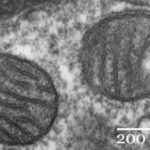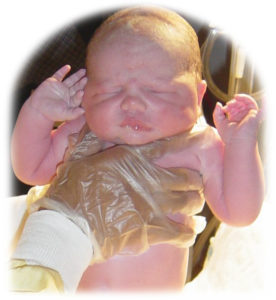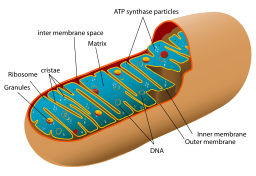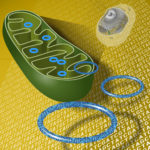Why I Hate the Term “3-Parent Baby’”
A healthy baby boy has been born following mitochondrial manipulation technology (MMT). It was bound to happen, and might offer an alternative for some women who carry a mitochondrial disease.
The feat, accomplished by John Zhang, MD, PhD, medical director and founder of New Hope Fertility in New York City, but done in Mexico, will be presented at an upcoming conference and is abstracted in a medical journal (Fertility and Sterility), but hit the headlines first in New Scientist on Tuesday. An odd choice for an announcement, but the excellent article shows some restraint in using the term “3-parent technique”. Still, it unleashed a fresh barrage of “3-parent” and “designer” baby maddening memes.
The last time “3-parent baby” hit the media, I wrote “Mitohype: 3-Parent Designer Babies Who Will Change Human Evolution“, here at DNA Science. I began that post, “If I turned in a 20,337 word article and the editor decided to replace 37 of those words, would I call her a co-author? Certainly not”.
In a nutshell, 37 genes do not a parent make. I say that as a parent, not a geneticist.
MMT combines the nuclear DNA from a (future) mother and father with the mitochondria (and its DNA) of a presumably healthy donor – hence the 3 parents. Mitochondria are the cell parts that house the reactions that extract energy from nutrients, as well as their own tiny genomes.
 Each of a cell’s many mitochondria harbors only the 37 mitochondrial genes, compared to the 20,300 or so genes in the nuclear genome. (Sperm are too tiny to transmit mitochondria, so the diseases pass from mothers only.)
Each of a cell’s many mitochondria harbors only the 37 mitochondrial genes, compared to the 20,300 or so genes in the nuclear genome. (Sperm are too tiny to transmit mitochondria, so the diseases pass from mothers only.)
The baby boy demonstrates that MMT can indeed circumvent passing a mitochondrial mutation to a child, when the mother is a known carrier. The specific approach,“spindle nuclear transfer,” avoids destroying a fertilized ovum, which the parents wanted to do for religious reasons. This is puzzling because their new selected son was one of five embryos created, four of which had abnormal numbers of chromosomes and presumably were frozen or discarded.
For details, see my article just published in Medscape (which unfortunately added “3-parent” to the headline for SEO, I suppose) and covering the FDA’s 2014 meeting on mitochondrial manipulation for background.
I don’t want to rehash the embryology here, so I’ll focus on what dominates the headlines. CNN’s take is particularly annoying —“It’s a (controversial 3-parent baby technique) boy!” — because the child’s chromosomal sex was hardly a surprise, having been known since cell #1.
The idea of a 3-parent child resulting from MMT is absurd. A mitochondrial donor may provide copies of her 37 mitochondrial genes, but she does not:
 Push an 8-pound blob out of her swollen uterus, through her vagina
Push an 8-pound blob out of her swollen uterus, through her vagina- Breastfeed
- Change thousands of doody diapers
- Schlep to all manner of appointments for years
- Feed and then drop off children at day-care or preschool before thinking about herself
- Stay up for nights on end with a feverish little one or a child who simply does not want to sleep
- Contact various bodily fluids on a regular basis
- Spend years unable to crap at home without an audience
- Listen to the angst of the 3-parent fertilized ovum once it has become a teenager
- Drop said offspring at college
- Worry. Constantly. Even after they’ve grown up
- Share in the joy as they succeed in life
- Hope the grown child will care for her as she ages
I can also think of “3-parent” situations that don’t involve manipulating genes, gametes, or fertilized ova. Isn’t a nanny who does all of the cooking, dressing, shopping, helping with homework, and transporting of a child while the parents work a third parent? Ditto a grandparent, stepparent, aunt, uncle, sibling, or other relative or friend who does the same?
 So let’s find something a little less hyperbolic and offensive than “3-parent baby.” It’s not a ménage-a-trois, it’s a smidgeon of DNA. Assisted reproductive technologies, even the experimental and controversial ones like MMT, even when done intentionally in countries with lax regulations, are intended to avoid terrible diseases and to perhaps learn something about early prenatal development – not to seek someone’s idea of a perfect child.
So let’s find something a little less hyperbolic and offensive than “3-parent baby.” It’s not a ménage-a-trois, it’s a smidgeon of DNA. Assisted reproductive technologies, even the experimental and controversial ones like MMT, even when done intentionally in countries with lax regulations, are intended to avoid terrible diseases and to perhaps learn something about early prenatal development – not to seek someone’s idea of a perfect child.


[…] Source: Why I Hate the Term “3-Parent Baby’” […]
I also wince every time I see the term “3-parent baby.” I am very interested in mtDNA from the perspective of genetic genealogy and population genetics, so I’m hoping there will be some documentation that an mtDNA transfer has occurred, even if the donor is unknown.
But mtDNA has kind of a dual personality: it is absolutely essential and at the same time it is rather mundane because its functions are so elemental. As long as we have a working version, it has very little to do with what makes us unique.
Thanks Ann. Mitochondria are so fascinating for so many reasons. But it is so difficult to write about them for a general audience — I was even afraid “nuclear” might be misconstrued.
The mtDNA isn’t really what is being transferred. It’s just there, in the donor cell. It’s nucleus is sucked out and the “mother’s” plopped in.